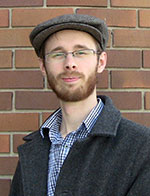Today is December 22, and if you’re reading this, the world hasn’t ended. So it looks like the Mayan doomsday believers were wrong—just like all the other end-of-the-world predictions thus far. In my column for the November/December issue of The Canadian Lutheran, I take on the connection between doomsday predictions and the season of Advent (which we’re still in for a few more days). A segment follows below:
But Christians are not the only ones in a season of “waiting” this December. A small number of conspiracy theorists have been predicting December 21st as the end of the world. The idea arises out of some Mayan records which cite that date as the end of an era—the ending of one cycle of creation and the beginning of the next. While Mayan scholars dismiss doomsday interpretations of these records, believers think the Mayans knew something we don’t— that some great catastrophe is coming and that humankind’s time is drawing to an end. Consequently, this has been a year of great darkness for doomsday believers. They have been living under the shadow of death, a shadow growing ever blacker and grimmer as December 21st approaches.
How different from the Christian’s hope! We too dwell under the dark shadow of death, but it is a shadow we know is defeated. We await reunion with our Lord Jesus; doomsday theorists see only the approach of death. At the first Christmas, God Himself entered into our world. In Him was Light, a Light that was the Light of all mankind; and that Light broke into the darkness (John 1:4-5). Yes, on the people dwelling in darkness a great Light dawned—and it forced the shadow of death to retreat (Matthew 4:16).
Check out the full article entitled “Joy comes with the morning” over at CanadianLutheran.ca.
——————–


